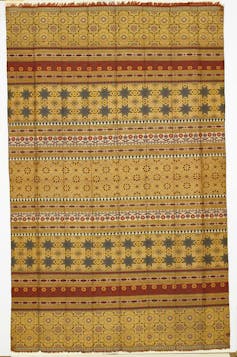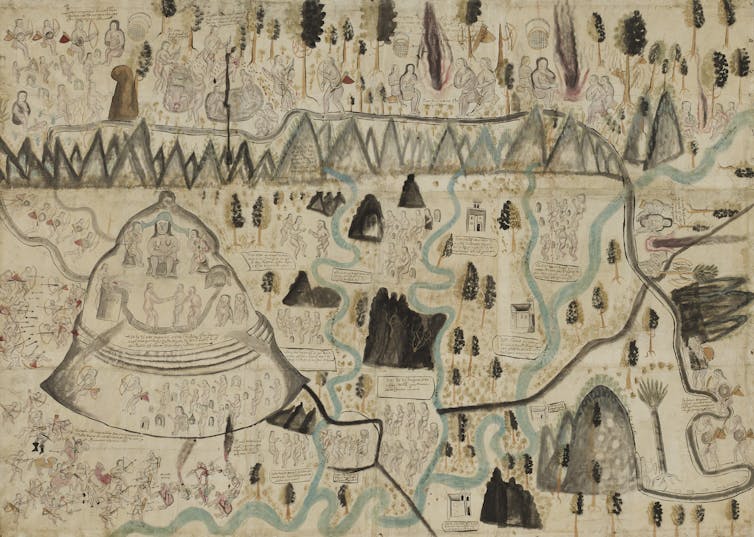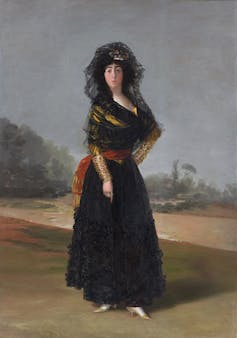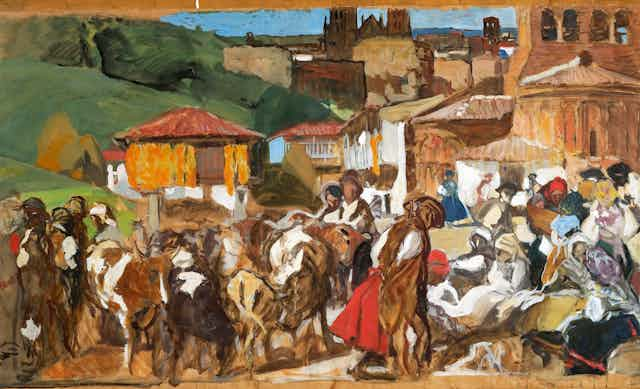The Royal Academy’s first big show of 2023 is unusual. As well as presenting an impressive collection from Spain and the Hispanic world (around 150 items covering over 4,000 years, including paintings, sculptures, maps, books and manuscripts), it also tells the story of the collection’s source – the Hispanic Society.

The Society’s founder, Archer M Huntington, was born in 1870 to a wealthy American railroad magnate. His parents took him on extended trips to Europe where he discovered the delights of art in the museums of London and Paris.
These travels did not include Spain, but the young Huntington quickly developed his own private passion when, at the age of 12, he bought a book about Spanish gypsies. He never looked back.
He learned Spanish, read widely about Spain’s history and culture and by the age of 20 decided that he would open a museum of Hispanic material. This became Huntington’s life’s work, first with an extensive library and, gradually, a wide collection of art and artefacts.
In 1904 he bought land in upper Manhattan and oversaw the construction of the Hispanic Society building. By his death in 1955, Huntington’s collection comprised around 350,000 items.
Huntington was respected not just as a wealthy enthusiast but as a genuine Hispanic studies expert. In his early twenties he took lessons in Arabic (considered very unusual at the time), recognising the significance of Arabic culture in medieval and early modern Spain.
What’s on show?
The Royal Academy show is a fascinating if inevitably abbreviated summary of Huntington’s interests.
The earliest works are earthenware pots from the Bell Beaker culture that originated around 2700BC in present day Portugal. Nearby is a display of Celtiberian gold and silver jewellery dating from over 2,000 years later, from the north of Spain. It includes two long coiled silver bracelets with stamped and punched designs and an elegant gold and silver torque.

Then, continuing this high speed journey through time – and in a vivid demonstration of the Iberian peninsula’s position as crossroads between the Mediterranean, Northern Europe and Africa – there are examples of how successive ruling powers left their mark.
From the second century AD there are Roman marble sculptures and a striking mosaic head of Medusa. From the sixth century, richly decorated Visigothic metalwork. From the Islamic presence, colourful glazed ceramics and weavings including a spectacular silk shawl from circa 1400.
The works displayed demonstrate how, during the medieval and early modern era, the Iberian Peninsula was an extraordinary cultural melting pot. This resulted in cross fertilisation between Muslim, Jewish and Christian arts and crafts.
The exhibition then moves on to the period of Christian Spanish power both within the peninsula and across the Atlantic to the Americas – the “Hispanic” world of the show’s title.
Portugal and Portuguese colonial territories were not part of Huntington’s collecting, but he acquired some wonderful works from Spanish America.
As with objects that illustrate the rich cultural mix of the Iberian Peninsula, a selection of pottery, paintings, sculptures, weavings and elaborately carved and painted chests are exhibited, where indigenous American materials, styles and iconography are blended with that of the invading Spaniards.
Though in some cases the craftsmen were working under duress, the care and expertise suggests a pride in their cultural traditions. These objects were a means of preserving traditional skills and knowledge.

In the splendid Map of Tequaltiche from Zacatecas of 1584 (commissioned by Spanish officials as part of the extensive fact-finding Relaciones Geográficas) the artist has included details of the landscape with the ruler of the village and his two sons. They are seated on top of a steep hill, presiding over other local settlements.
Significantly, in the lower left, the artist also represents a bloody battle between the local Caxcan people and the invaders. Two of the Spaniards have been beheaded and several others wounded.
Treasured Spanish paintings
The show includes paintings by artists of the Spanish golden age, including El Greco, Zurbarán and Velázquez. But there are also surprises, such as a remarkable still life by the lesser known Marcos Correa, from about 1670.
The paintings are few and take no pride of place over the other material. This is not just a decision of the curators – it reflects the status of paintings within Huntington’s collection.

Despite his profound knowledge of Spanish art, Huntington made a point of not buying paintings in Spain. He did not want to be what he termed “a plunderer” of Spain’s own heritage. The works in his collection were mostly family heirlooms or purchased at auction.
Pride of place among Spanish artists is given to Francisco Goya, to whose work the grand octagonal central hall is dedicated.
Here is perhaps the most eye-catching painting in the Hispanic Society’s collection and the image used on the promotional material for the Royal Academy show: the portrait of the Duchess of Alba of 1797. Works by Spanish contemporaries of Huntington such as Sorolla are also on show.
In 1911 Huntington commissioned Sorolla to paint a large mural to be installed in a purpose-built gallery at the Hispanic Society. Titled Vision of Spain, this series of 14 large panels depicts life in the different regions of Spain for which Sorolla spent nine years travelling around the country sketching the landscape, the peoples and their customs and cultures.
A large sketch for the mural of Castille is included in the final room of the exhibition. The panoramic view stretches from the Cantabrian coast, through the districts of Asturias, Old Castille and León, ending up in Toledo in New Castille. A fitting end to a remarkable exhibition that so vividly illustrates Huntington’s lifelong passion for Spain and the Hispanic world.

